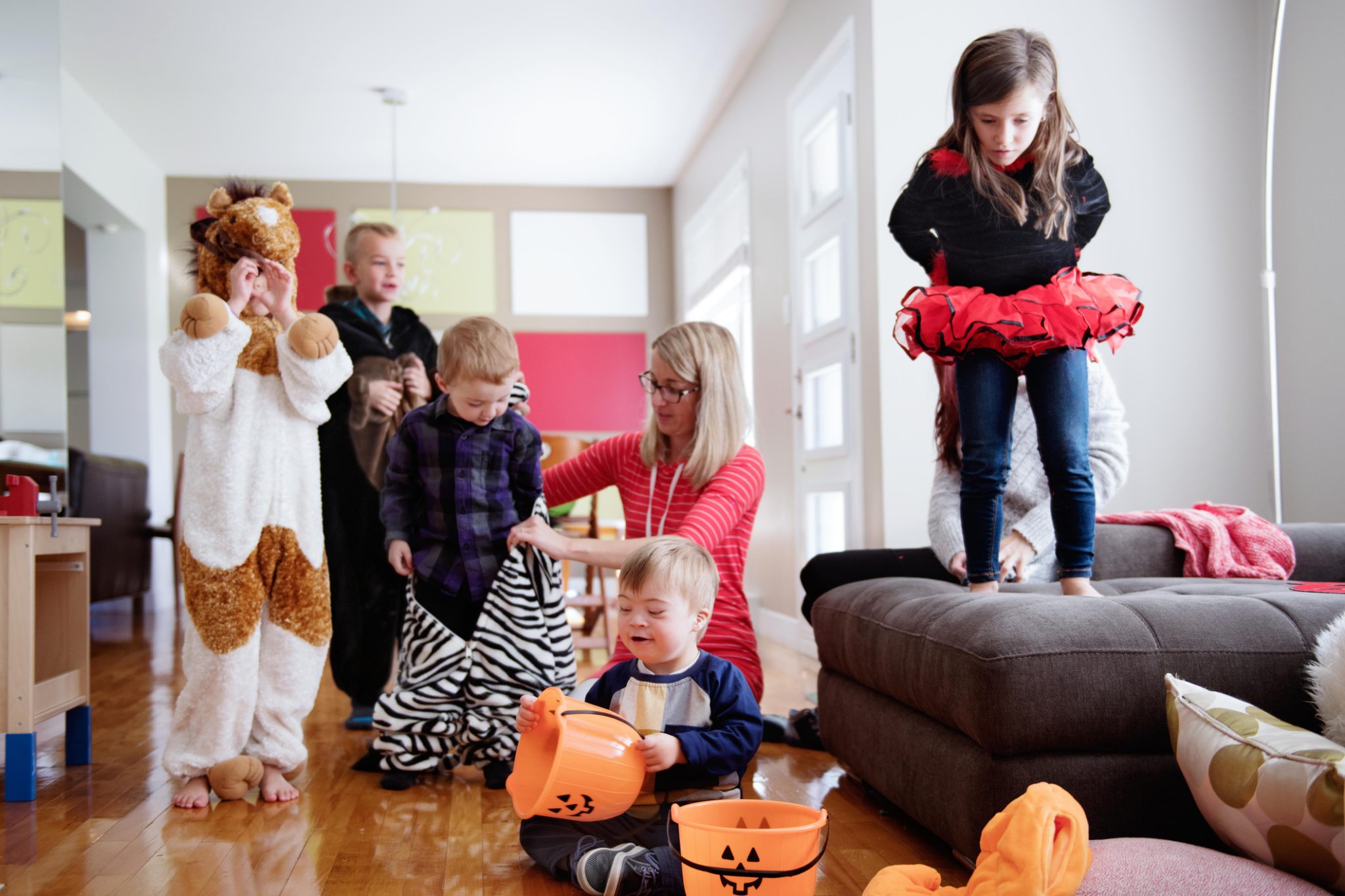By Rachel Brauner and Andrew Crocker
Halloween is right around the corner, and we have a few helpful tips for parents, caregivers, and neighbors in creating an inclusive Halloween experience for trick-or-treaters with disabilities. With these helpful tips, you are one step closer to creating an accessible Halloween and safe space in your community.
In addition to all the ghosts and vampires roaming the streets, events surrounding Halloween may present some unique challenges, especially for individuals with sensory and/or physical concerns and food allergies, among others. The tips below are intended to help make this year’s Halloween events spooktacular!
Parent/Caregiver Tips Before Halloween
- Make a plan with the child in advance to talk about costume selection, preference for when and where to trick-or-treat, and any alternate activities that may be available, such as a fall festival at the local community center.
- Select a costume that makes your child easily visible in the dark to improve Halloween safety.
- Make sure the costume is comfortable and does not trigger sensory concerns: the feel of the fabric, the snugness of the costume, or the noise it makes, etc.
- Review Halloween safety and etiquette: “TRICK-OR-TREAT!” and “THANK YOU!” and the inevitable question “What’s your costume?” or “What are you?”
- Help the child become familiar with the trick-or-treat route to enhance safety by doing a test run in the daytime.
- Prepare the child for spooky sounds, decorations, and other trick-or-treaters in their costumes.
- Identify alternative community-based activities that may allow for a seasonal celebration in a more organized, supportive environment.
- Avoid overstimulation or stressful situations, such as large crowds, that may put a damper on a good time.
Community-Based Tips for Creating an Inclusive Halloween
- Try to create the most accessible and inclusive situation possible. For example, if you have a steep driveway or stairs leading up to your home, try sitting at the sidewalk level.
- Keep the pathways to your house clear of objects and ensure appropriate lighting to help navigate sidewalks at night.
- Be mindful of Halloween décor, especially loud/unexpected noises and/or bright lights. Consider lanterns or glowing lights, rather than strobe lights.
- Offer non-edible treats, such as stickers, erasers, crayons, and coloring books, as an alternative to candy.
- Practice patience and allow extra time for children who may need it.
- Do not try to pet or distract any service dogs that are accompanying trick-or-treaters.
- If a child has a visual impairment, describe the type of candy you have in the bowl and allow the child the choice of candy.
- If a child has a hearing impairment remember to face them so they can clearly see your mouth when you are talking, even if they have an interpreter present.
- Consider having communication cards on hand for a child who may have difficulty understanding or responding to questions.













